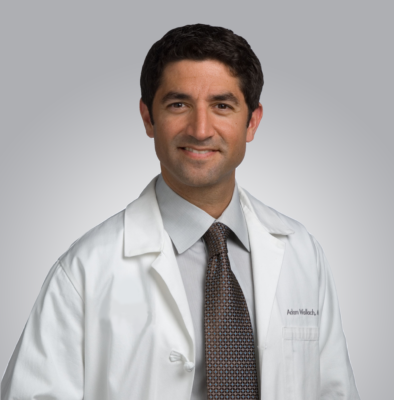SCLERODERMA
Scleroderma is an autoimmune disorder that causes an abnormal growth of skin and other connective tissues. The term, derived from Greek, means “hard skin” and refers to the hard, tight skin that develops in many of those affected.
Scleroderma is more common in women, but the disease also occurs in men and children. It affects people of all races and ethnic groups.
In scleroderma, the immune system stimulates cells called fibroblasts to produce too much collagen. The collagen forms thick connective tissue that builds up within the skin and internal organs, such as the heart, lung and kidneys, and can interfere with their functioning. Blood vessels and joints can also be affected.
Scleroderma falls into two main classes: localized scleroderma that affects only certain parts of the body and systemic sclerosis that affects the whole body.
A. Localized Scleroderma
Localized scleroderma does not progress to the systemic form of the disease. Localized forms of scleroderma can improve or go away on their own over time, but the skin changes and damage that occur when the disease is active can be permanent. For some people, localized scleroderma is serious and disabling.
There are two basic types of localized scleroderma:
1) Morphea
Morphea refers to local patches of scleroderma.
Morphea can be either localized or generalized. Localized morphea limits itself to one or several patches, ranging in size from ½ inch to 12 inches in diameter. The disease is referred to as generalized morphea when the skin patches become very hard and dark and spread over larger areas of the body. Regardless of the type, morphea generally fades out in 3-5 years. However, people are often left with darkened skin patches and, in rare cases, muscle weakness.
Morphea usually appears in people between the ages of 20 and 40.
2) Linear Scleroderma
Linear scleroderma describes a single line or band of thickened or abnormally colored skin. Usually, the line runs down an arm or leg, but in some people it runs down the forehead. The term term “en coup de sabre”, or “sword stroke,” may be used describe this visible line.
Linear scleroderma usually occurs in children and teenagers.
Some people have both morphea and linear scleroderma.
B. Generalized Scleroderma
Limited cutaneous scleroderma
Limited cutaneous scleroderma tends to develop gradually and affects the skin only in certain areas: the fingers, hands, face, lower arms, and legs.
Most people with limited disease have Raynaud’s phenomenon for years before skin thickening starts. Telangiectasia and calcinosis often follow. Gastrointestinal involvement commonly occurs, and some patients have severe lung problems, even though the skin thickening remains limited.
People with limited disease often have all or some of the symptoms that some doctors call CREST, which stands for the following:
- Calcinosis: The formation of calcium deposits in the connective tissues, which can be detected by x- ray. These deposits can break through the skin and result in painful ulcers.
- Raynaud’s phenomenon: The small blood vessels in the hands or feet overreact to cold or anxiety and reduce blood flow to the fingers or toes. As a result, the hands or feet turn white and cold, then blue. As blood flow returns, they become red. The fingertips and toes have skin damage, such as ulcerations. (NOTE: Raynaud’s phenomenon also occurs in people atherosclerosis or systemic lupus erythematosus (lupus) and in people who are otherwise normal.)
- Esophageal dysfunction: Impaired function of the esophagus that occurs when smooth muscles in the esophagus lose normal movement. In the upper and lower esophagus, the result can be swallowing difficulties. In the lower esophagus, the result can be gastroesophageal reflux (GERD) and inflammation.
- Sclerodactyly: Thick and tight skin on the fingers, resulting from deposits of excess collagen within skin layers. The condition makes it harder to bend or straighten the fingers. The skin may also appear shiny and darkened, with hair loss.
- Telangiectasia: A condition caused by the swelling of tiny blood vessels, in which small red spots appear on the hands and face. Although not painful, these red spots can create cosmetic problems.
Diffuse cutaneous scleroderma
This condition typically comes on suddenly. Skin thickening begins in the hands and spreads quickly and over much of the body, affecting the hands, face, upper arms, upper legs, chest, and stomach in a symmetrical fashion (for example, if one arm or one side of the trunk is affected, the other is also affected). Some people may have more area of their skin affected than others. Internally, this condition can damage key organs such as the intestines, lungs, heart, and kidneys.
People with diffuse disease often are tired, lose appetite and weight, and have joint swelling or pain. Skin changes can cause the skin to swell, appear shiny, and feel tight and itchy.
The damage of diffuse scleroderma typically occurs over a few years. After the first 3 to 5 years, people with diffuse disease often enter a stable phase lasting for varying lengths of time. During this phase, symptoms subside: joint pain eases, fatigue lessens, and appetite returns. Progressive skin thickening and organ damage decrease.
Gradually, however, the skin may begin to soften, which tends to occur in reverse order of the thickening process: the last areas thickened are the first to begin softening. Some patients’ skin returns to a somewhat normal state, while other patients are left with thin, fragile skin without hair or sweat glands. Serious new damage to the heart, lungs, or kidneys is unlikely to occur, although patients are left with whatever damage they have in speci¦c organs.
People with diffuse scleroderma face the most serious long-term outlook if they develop severe kidney, lung, digestive, or heart problems. Fortunately, less than one-third of patients with diffuse disease develop these severe problems. Early diagnosis and continual and careful monitoring are important.
You can schedule an appointment with one of our Dermatologists in our Greater Reno-Tahoe area locations to discuss your scleroderma and any treatment recommended.











